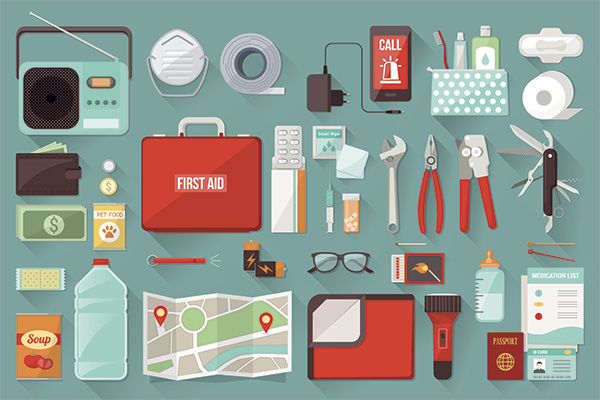You never know what’s going to happen. From fires to floods, emergencies can crop up at any time and cause you to need to get out fast (or stay put for long periods of time). Chances are you probably already have some sort of plan for these situations, but do you have all the right stuff packed? Ideally, you’ll have one bag that you keep at home and one that you keep in your car or another easy-to-access place. Packing the right items is vital.
A Change of Clothing For Everyone
Both your indoor bag and your go bag should have at least one change of clothing for everyone, and more if you can fit them. Avoid anything too bulky and instead stick to t-shirts, leggings, and other items that are easy to roll up, which saves space. Remember to include socks and underwear, plus pull-ups or diapers if you need them for any younger children.
An Emergency Phone and Ways To Charge Electronics
At a minimum, you need to have a battery back up for your phone in each of your emergency bags. This helps to ensure that you have a charge when you need to hear from emergency services or get in touch with friends and family members. It’s also a good idea to pack additional charging cords and even a cheap flip phone in case your usual smartphone isn’t available for some reason.
Several Forms of Money
You never know when you’ll end up stranded away from home and need to feed your children or get a hotel room for the night. If you’re stranded somewhere because of a snowstorm, hurricane, or another big event, you might find that ATM machines or credit card machines aren’t working properly. It’s important to carry cash and a checkbook in your go bags in case you can’t use electronically-based forms of payment. If you frequently travel out of the country, also include currency for the countries you visit the most. Don’t forget to add any keys to safety deposit boxes that you may have.
Food and Water For Several Days
You never know how long you’ll be without the means you need to get to the grocery store, which means now is the time to pack food and water to last each family member for at least a few days. Gather one gallon of water per day per person, which can be used both for drinking and sanitation. Additionally, gather enough non-perishable foods (that don’t need to be cooked) to last the family for several days as well. Think protein bars, soup that can be eaten from the can, peanut butter, dried fruits and nuts, and so on.
A First Aid Kit
Injuries don’t wait for a more convenient time, so place a first aid kit with your stay bag and your go bag as soon as possible. A solid kit will have bandages, antibacterial ointment, ace bandages and clips to hold them in place, and alcohol swabs. It’s also a good idea to include vinyl gloves, a thermometer, over-the-counter medications, and any prescription medications that people in your family take. If you don’t already have these items at home, it’s likely more convenient to purchase premade kits.
Personal Documentation
During a state of emergency, you may need to be able to identify yourself to leave or re-enter some places. It is a good idea to pack your documentation, as well as any documentation that your family members have, in one of your bags. This includes birth certificates, medical records, vaccination records, adoption records, marriage certificates, and anything else that you think may be important.
While most emergency bags have the same basic list of necessities, only you truly know what your family needs. Use this guide as a starting point and add to it or take away from it as you feel necessary. Don’t forget to keep the needs of any family pets in mind as well!


